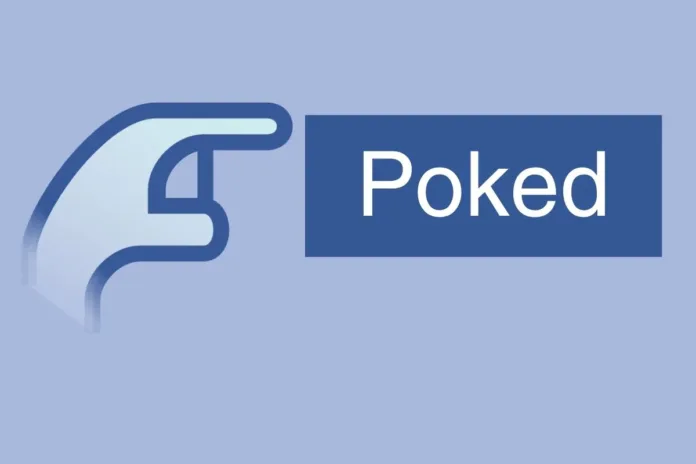Table of Contents
Facebook Pokes Return with a Modern Twist
At Squaredtech, we have seen how social media platforms recycle old features to capture fresh interest, and Facebook is doing just that with pokes. Once a quirky way to grab someone’s attention during the early days of the platform, the poke seemed to vanish from relevance over the years. Yet technically, the poke never fully disappeared. It remained buried within the platform, waiting for a potential revival.
Read More About Our Article of Facebook AI Photo Tool Now Asks to Use Your Camera Roll—Even Unshared Images Published on
June 29, 2025 SquaredTech
Now Meta has chosen to give this relic a new spotlight. A dedicated poke button is visible on user profiles, letting people send a poke directly to their friends. Recipients get a notification, creating an immediate alert. This change gives pokes visibility on the platform once again, making it easier for users to interact in a quick and informal way.
Along with the button, Meta has introduced a poke-tracking system. At facebook.com/pokes, users can see who poked them, track back-and-forth interactions, and monitor a growing poke count with friends. Pokes can also be dismissed if someone does not want to engage. By gamifying the feature, Meta aims to transform what was once a simple digital nudge into a modern engagement tool.
Why Meta is Betting on Gamifiction
We have consistently reported on how younger audiences are drawn to gamified mechanics in apps. Snapchat streaks and TikTok rewards are examples of features that encourage daily use through psychological triggers. Streaks show how many days friends have kept in touch, but they have also drawn criticism. Regulators and researchers argue these mechanics are addictive, keeping children hooked longer than intended.
Meta is leaning into this model with poke counts. Every time two friends exchange pokes, the counter increases. To keep it visually appealing, Meta adds new icons to represent higher activity, such as fire emojis or “100” markers. This mirrors what Snapchat did with streak milestones.
The decision is not without controversy. Research by social psychologist Jonathan Haidt, author of The Anxious Generation, highlights the dangers of streak-based engagement on children’s mental health. Haidt and NYU’s Zach Rausch published documents showing that Snap employees understood streaks were addictive but chose to keep them because they drove higher engagement.
Meta is now adopting a similar strategy with pokes. While Facebook has historically relied on family and community groups for user retention, its biggest challenge has been attracting younger users who are now spread across Instagram, TikTok, and Snapchat. By gamifying pokes, Meta hopes to spark daily habits that keep Gen Z coming back.
Facebook’s Struggle for Younger Users
Despite its global dominance, Facebook has faced sharp criticism for losing ground among young audiences. Internal reports and market studies have repeatedly shown a decline in U.S. teenage users. Many see Facebook as a platform for parents, not a space where Gen Z wants to spend time.
To address this, Meta has experimented with youth-focused projects. In 2020, the company launched Facebook Campus, a college-only platform meant to bring back the exclusivity of early Facebook. Yet the initiative failed to gain traction and was closed by 2022. More recently, Facebook introduced redesigns intended to resemble platforms like TikTok, emphasizing short-form video and a more streamlined interface.
The poke revival fits into this larger strategy. Instead of abandoning older features, Meta is reframing them to match modern digital habits. By making pokes feel like streaks, Meta adds a competitive and playful layer to a tool that was once dismissed as outdated.
We recognize this as a broader pattern. Legacy platforms often face the challenge of staying relevant as new competitors emerge. The success or failure of reviving pokes will reveal whether nostalgia combined with gamification can shift Facebook’s demographic balance.
The Numbers Behind the Revival
The push to bring pokes back did not happen overnight. In March 2024, Meta made small adjustments to make poking easier. The poke page became searchable, and users could poke someone directly after searching their name. The result was striking: Meta reported a 13-times increase in pokes within a single month after these changes.
Encouraged by that spike, Meta doubled down by adding the poke button on profiles and introducing the poke count system. By creating metrics and milestones, Meta is directly targeting user behavior patterns proven successful in other platforms.
For Facebook, even modest improvements in engagement matter. The platform continues to generate massive advertising revenue, funding Meta’s investments in artificial intelligence and metaverse initiatives. But the company knows its future growth depends on retaining young users. Pokes may seem small, but they represent an attempt to modernize an old feature into a sticky, gamified habit.
What a Poke Means Today
One of the quirks of pokes is their lack of clear definition. From the beginning, Facebook never officially explained what a poke was meant to represent. Was it a digital wave, a flirtatious signal, or simply an annoyance? That ambiguity gave pokes flexibility, allowing users to decide their own meaning.
Today, that ambiguity remains. A poke could be friendly, ironic, playful, or even irritating. By adding poke counts and profile buttons, Meta is not redefining the poke but amplifying its visibility. The mystery of its purpose is part of its appeal, especially for younger users who thrive on inside jokes and casual interactions.
Conclusion: Can Nostalgia Win Back Gen Z?
At Squaredtech, we see Facebook’s poke revival as more than a gimmick. It is a calculated attempt to use nostalgia, gamification, and behavioral design to re-engage a demographic that has largely abandoned the platform. The company is betting that what worked for Snapchat and TikTok can work for Facebook too.
Whether this will succeed is still uncertain. Poke counts may never match the addictive pull of streaks, but their presence signals Meta’s continued push to reshape Facebook’s identity for a younger audience. For now, pokes are back in the spotlight, proving that even the simplest digital gesture can evolve into a powerful engagement tool.
Stay Updated: Tech News


